Holly branches festooned in red berries together with ivy leaves were transformed into festive Christmas decorations when I was growing up in Ireland.
Have you ever wondered why this beautiful greenery is associated with Christmas?
Why are we drawn to nature at this time of year, when the days are longer and the nights seem darker?
Are we simply wired to bring the outside in to celebrate this joyful season?

Table of Contents
- History of Holiday Decorating in Ireland
- Christmas Trees - A Not So Irish Tradition
- Holly As The Decoration Of Choice For Rural Ireland In Centuries Past
- Holly - An Important Plant In Celtic Ireland
- Acceptance Of Holly As Part Of The Irish Christian Tradition
- Irish Superstitions About Holly
- Mistletoe - Brought To Ireland From England
History of Holiday Decorating in Ireland
Red poinsettias are displayed all over Ireland today, but when I was growing up in the 1970's I never laid eyes on these Christmas favorites. No! Holly (officially known as Ilex) was the go to decorative plant during my childhood Irish Christmases.
Perhaps, in years gone by, decorating a home was made easy and inexpensive by snipping branches from vegetation growing nearby.
But the ornamental use of holly and ivy (officially hedera helix) was not confined to the poorer classes in Ireland in the 19th century.
Even the wealthiest and grandest homes, especially in Victorian times, boasted decorative holly boughs, adding to their festive cheer.

Vintage Christmas cards from the British Isles often feature red berried holly sprigs.
And in Ireland, Christmas wreaths of holly are hung on doorways and are frequently laid on graves at Christmas time.
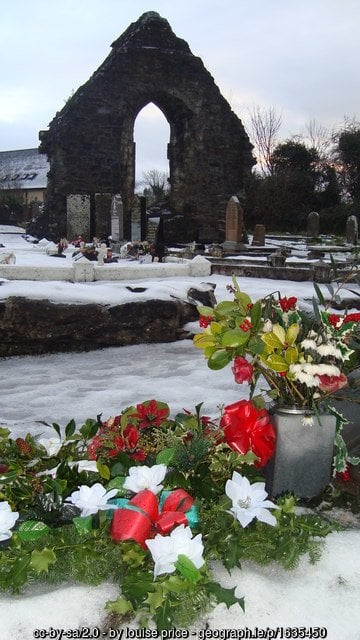
Let's explore this old tradition in today's blog post.
Christmas Trees - A Not So Irish Tradition
Christmas trees may be very popular in modern Ireland, but they were not introduced to Ireland until the early 1840's by wealthy Anglo Irish Victorians.

The custom was first introduced to Britain by Prince Albert, the German husband of Queen Victoria.
After an image of the British royal family, with their decorated Christmas tree at Windsor Castle, was published in the Illustrated London News in 1848, Christmas trees became very popular in England.
The custom took hold in Ireland over the coming decades.
Holly As The Decoration Of Choice For Rural Ireland In Centuries Past
Holly flourished in Ireland's winter season and could be found growing all around the Irish countryside. Nature's bounty meant even the poorest of Irish people could afford to decorate their homes for Christmas.
The great outdoors provided a rich treasure trove of green and red embellishments to brighten up Ireland's rural cottages.
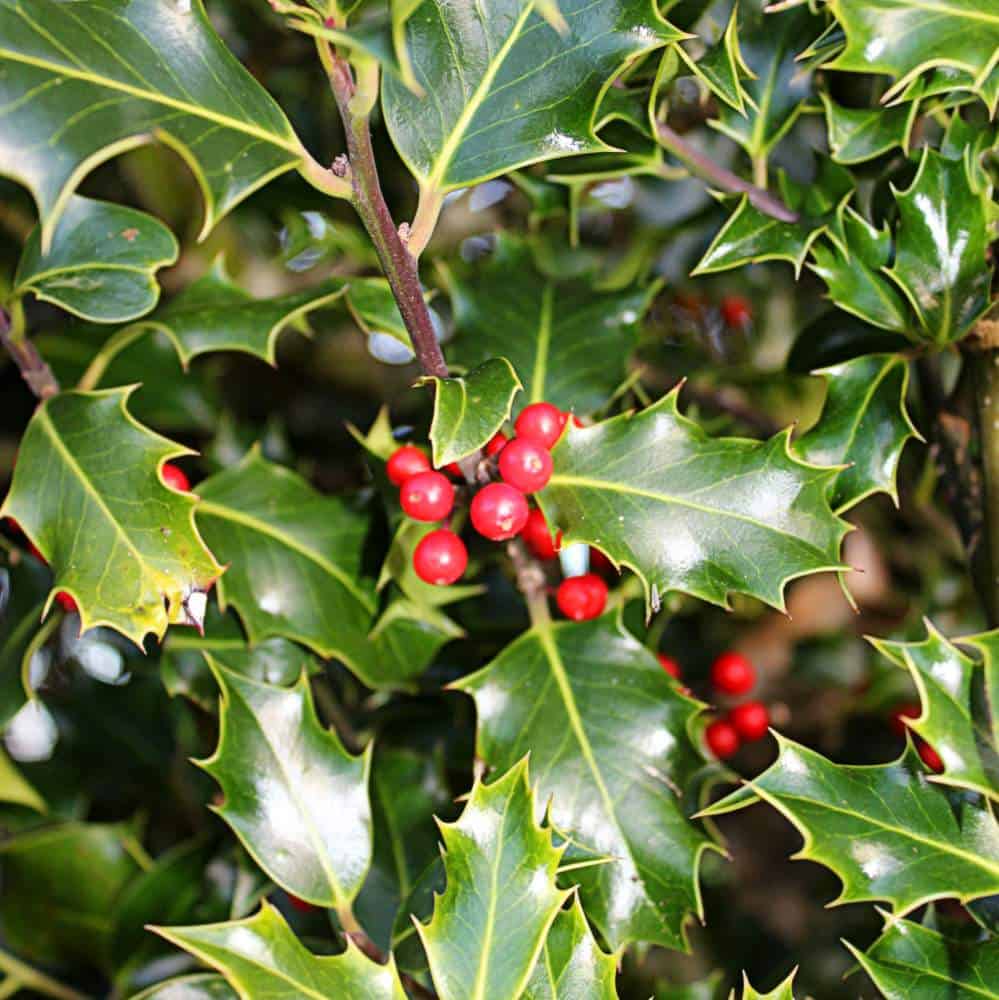
Of course, berried plants were the most popular, with their contrasting red and green hues adding to their appeal.
The berries are devoured by birds, but are poisonous to humans. For this reason, decorative sprigs of holly were kept out of reach of little ones.
In days gone by, there were no cans of snow spray to add white snow-like highlights to green leaved branches. But our ancestors were creative and starch would have been used to make a snow effect.
During the dark nights of winter our ancestors feared ghosts and demons, but believed trimmings of holly in a home could provide protection from evil.
Holly - An Important Plant In Celtic Ireland
Our ancient Celtic ancestors twinned the holly plant with the sacred oak tree. The oak was believed to be the controller of light during the spring and summer months, but the holly presided spiritually over the darker six months of the year.
In the Celtic tree calendar, holly is linked to the eighth month. It was said that at mid-summer the holly won the battle over light with the oak, and gained control of the coming darker months.
Holly and ivy was used by the Celts for their winter solstice celebration. It was thought the holly bush could ward off evil spirits. Winter solstice celebrations occurred on the longest night of the year around the 21st of December.
Ogham (pronounced OH-am) is the ancient Celtic form of writing and its alphabet is sometimes called the "Celtic Tree Alphabet." Each letter of the Ogham alphabet is assigned a tree or plant name. The letter 'T', or Tinne was associated with the holly tree and was the eighth letter of the old Ogham alphabet.
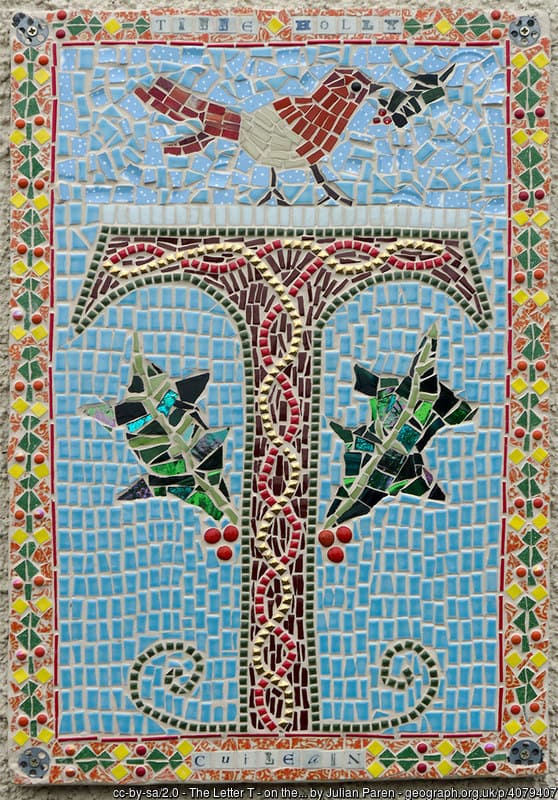
T is for Holly and the Celtic word for holly was 'tinne' (pronounced tin-neh) which is very close to the word for fire which is tine. The Gaelic or Irish word for holly is cuileann (pronounced kwill-en).
Tinne, the Celtic name for holly, means sacred tree. It's important to note that the wood of the holly tree creates a fierce fire which may explain the similarities in the words for fire and holly in old Irish. It is also believed that the word tinder is derived from the Celtic word, "tinne."
Holly was revered because it was an evergreen and the druids believed it special because it helped to keep the earth beautiful when the other trees shed their leaves. Holly was considered a protective plant.
A holly tree does not conduct lightening, so they were often grown beside homes as protection from lightning strikes. In Norse mythology it is associated with Thor, the God of Thunder.
Holly was also said to have important spiritual attributes and the druids believed it could guard against witchcraft and evil. The Irish loved to decorate their doors and windows with holly believing its spikes could capture evil spirits and prevent them from entering the house.
Holly around the home also became a safe haven for the faeries, who would guard against more sinister forces.
Bringing holly into the home brought good fortune. But be warned. Only snippets of the plant should ever be taken. Cutting down a full tree was thought to bring bad luck. Isn't it nice to know the druids were conservationists way back when, in ancient times?
Celtic chieftains were crowned with a wreath of holly to bring good luck to their reign.
The Romans never made it to Ireland, but they did settle in Britain. They used holly in their ancient festivals celebrating Saturn, their God of Agriculture and husbandry.
New born babies were bathed in water made by soaking and boiling holly leaves. And all these things were done because of deep seated Celtic beliefs in the protective power of holly.
Holly leaves stay green all year round and so these beautiful plants symbolized eternal life. It also symbolized Christ's crown of thorns in Christian times.
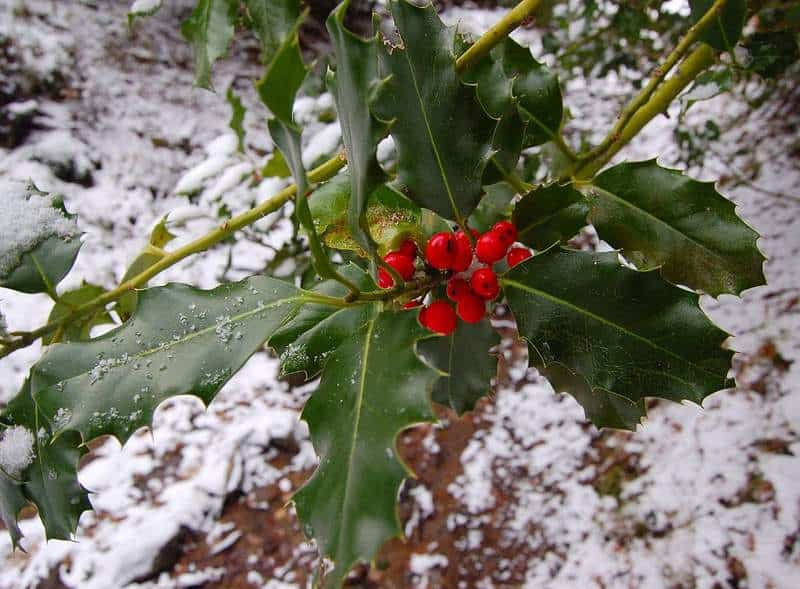
Acceptance Of Holly As Part Of The Irish Christian Tradition
After Ireland turned to Christianity in the 5th century, our ancestors did not turn their backs completely on their old Celtic belief system. Instead, they adapted it to suit their new faith.
It was said that holly was used to form part of the crown of thorns worn by Jesus, and it was the blood of our Lord that stained the berries of the plant red.
Irish folklore tells how an angel stands on each spike of the holly leaf and children prayed to these holy holly angels on Christmas Eve. Tradition says that on this holy of holy nights, no prayer was left unanswered.

Ivy was initially rejected as a decoration in Christian times. It was associated with secrecy and debauchery since it grows well in the shade. However, due to beliefs in its mystical powers and magical properties it continued to be accepted by many Irish.
It is no wonder that our ancestors used holly for the creation of Christmas wreaths and beautiful decorations.
Irish Superstitions About Holly
Other superstitions were associated with the holly plant.
If holly was the first evergreen plant to be brought into the house at Christmastime, then it was said the man would get the upper hand and rule the roost for the coming year. For that reason, women usually instructed that the ivy be collected first, then the holly.
Timing of taking down the holly was also very important. Once brought inside it must not be discarded or taken down until after Women's Little Christmas, on January 6th.
Throwing away a symbol of good fortune too soon could mean you were looking for trouble.
Nowadays, holly and ivy remain in the home until after the twelfth night between 5th January and 6th January. Most leave it up until after the feast of the Epiphany. In years gone by the decorations were left hanging until Candlemas in early February.
Mistletoe - Brought To Ireland From England
Kissing under the mistletoe is a New Year's tradition that was not originally linked with Ireland. In fact, the Irish did not celebrate the New Year on January 1st in ancient times.

Mistletoe is native to England but is hard to find in Ireland. It was only cultivated in Ireland by English settlers in Victorian and Edwardian times.
Mistletoe was not traditionally a very common decoration in Ireland, and therefore would not have featured in the decorative wreaths created by our ancestors.
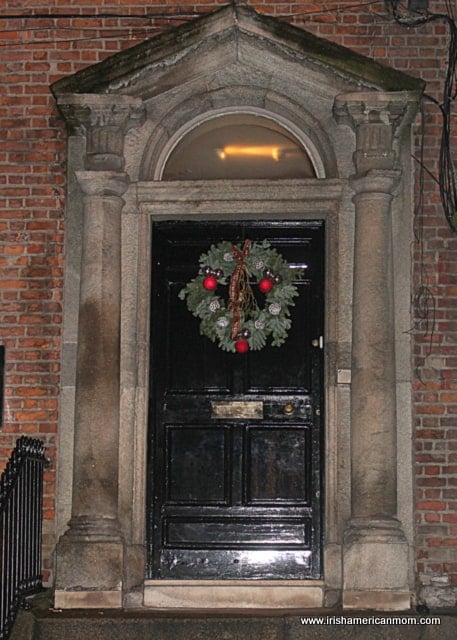
And there you have it - a quick round up of facts and Irish folklore related to the history of holly and ivy.
I hope you enjoyed this short exploration of the significance of holly and ivy as Irish Christmas decorations and how holly berries added cheerful spots of color as ornamentation in days gone by.
Have a wonderful Christmas season and enjoy the process of decorating your home in anticipation of this beautiful holiday.

Slán agus beannacht,
(Goodbye and blessings)
Mairéad -Irish American Mom
Pronunciation - slawn ah-gus ban-ock-th
Mairéad - rhymes with parade
Here are some other posts you might enjoy:
Christmas
- Sewing Spool Christmas Tree Ornament Craft
- Tissue Paper Christmas Tree Cone Craft
- Cardboard Tube Paper Plate Christmas Wreath
- Stirrings by Máire Malone - An Irish Poem for Christmas
Christmas Recipes
- How To Roast Potatoes Irish Or English Style
- How To Steam A Christmas or Plum Pudding In A Crockpot.
- Irish American Mom's Christmas Pudding
- Homemade Mincemeat


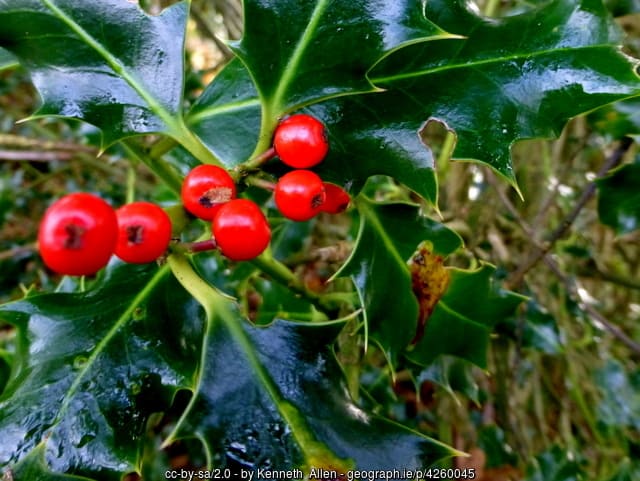
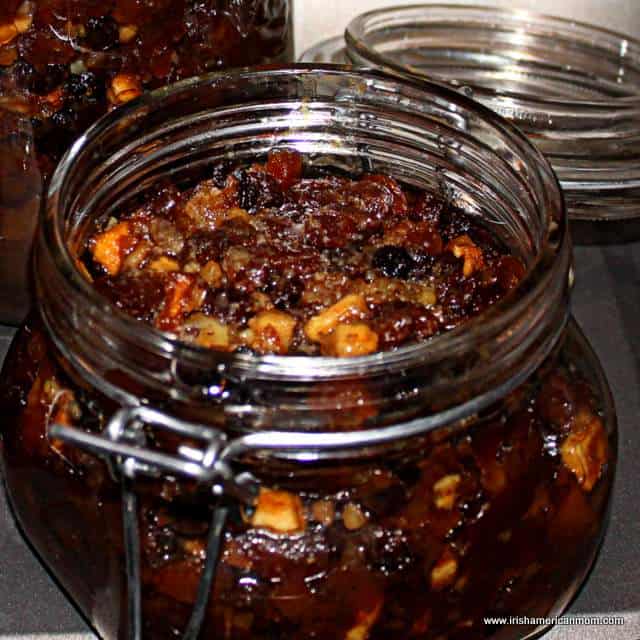
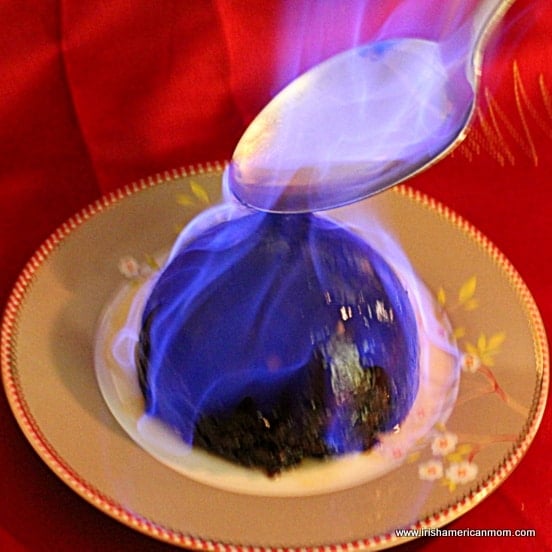
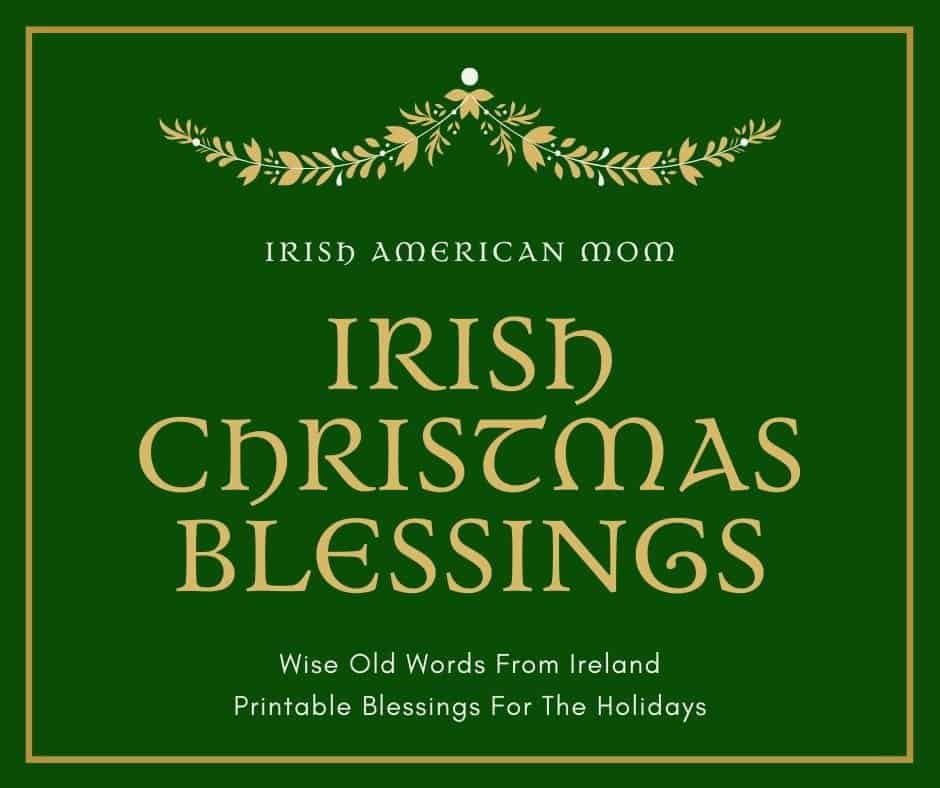












Cheryl Barker
I love the look of holly and red berries, Mairead. And I love everything decorated for Christmas. Hope you're enjoying the season and hope you have a wonderful Christmas with your family!
Irish American Mom
Hi Cheryl - Wishing you and yours the very best for Christmas and the New Year. Enjoy all the precious moments with your grandchildren this Christmas.
All the best,
Mairéad
Mary Power
Hello Mairead,
I've been making a yule log for years. Found a recipe in Bon Appetit and followed it step by step. I make meringue mushrooms and dust them with cocoa powder to look a bit dirty.
I wish you and your family a very Merry Christmas and all the best in 2019!
Mary Power
Irish American Mom
Hi Mary - Lovely to hear you too make a yule log for Christmas and your meringue mushrooms sound adorable. They might be the perfect addition for a fairy garden themed cake.
Wishing you and yours a very happy Christmas and all the best for the New Year.
Mairéad
Tami Rees
Wonderful ideas! I love decorating with natural materials and ivy is so nice for Christmas decor.
Irish American Mom
Hi Tami - I too love decorating with holly and ivy. Many thanks for stopping by.
Mairéad